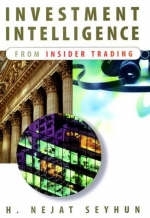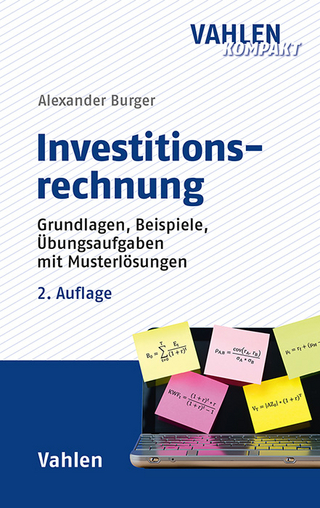
Investment Intelligence from Insider Trading
Seiten
1998
MIT Press (Verlag)
978-0-262-19411-2 (ISBN)
MIT Press (Verlag)
978-0-262-19411-2 (ISBN)
- Titel ist leider vergriffen;
keine Neuauflage - Artikel merken
Basing his insights on an exhaustive data set that captures information on all reported insider trading in all publicly held firms over 21 years - over one million transactions - the author shows how investors can use insider information to their advantage.
The term "insider trading" refers to the stock transactions of the officers, directors, and large shareholders of a firm. Many investors believe that corporate insiders, informed about their firms' prospects, buy and sell their own firm's stock at favourable times, reaping significant profits. Given the extra costs and risks of an active trading strategy, the key question for stock market investors is whether the publicly available insider-trading information can help them to outperform a simple passive index fund. Basing his insights on an exhaustive data set that captures information on all reported insider trading in all publicly held firms over 21 years - over one million transactions - the authors shows how investors can use insider information to their advantage. He documents the magnitude and duration of the stock price movements following insider trading, determinants of insiders' profits, and the risks associated with imitating insider trading.
He looks at the likely performance of individual firms and of the overall stock market, and compares the value of what one can learn from insider trading with commonly used measures of value such as price-earnings ratio, book-to-market ratio, and dividend yield.
The term "insider trading" refers to the stock transactions of the officers, directors, and large shareholders of a firm. Many investors believe that corporate insiders, informed about their firms' prospects, buy and sell their own firm's stock at favourable times, reaping significant profits. Given the extra costs and risks of an active trading strategy, the key question for stock market investors is whether the publicly available insider-trading information can help them to outperform a simple passive index fund. Basing his insights on an exhaustive data set that captures information on all reported insider trading in all publicly held firms over 21 years - over one million transactions - the authors shows how investors can use insider information to their advantage. He documents the magnitude and duration of the stock price movements following insider trading, determinants of insiders' profits, and the risks associated with imitating insider trading.
He looks at the likely performance of individual firms and of the overall stock market, and compares the value of what one can learn from insider trading with commonly used measures of value such as price-earnings ratio, book-to-market ratio, and dividend yield.
Part 1 Insider-trading patterns. Part 2 Does insider trading predict future stock returns?. Part 3 A stock-picking strategy. Part 4 Predicting future market returns. Part 5 Crash of October 1987 and insider trading. Part 6 Dividend yields and insider trading. Part 7 Dividend initiations. Part 8 Earnings announcements. Part 9 Price-earnings ratio. Part 10 Book-to-market ratio. Part 11 Insiders trading in target firms. Part 12 Insider trading in bidder firms. Part 13 Momentum and mean reversion. Part 14 Implementation and conclusions.
| Erscheint lt. Verlag | 4.12.1998 |
|---|---|
| Zusatzinfo | 24 |
| Verlagsort | Cambridge, Mass. |
| Sprache | englisch |
| Maße | 160 x 238 mm |
| Gewicht | 839 g |
| Themenwelt | Wirtschaft ► Betriebswirtschaft / Management ► Finanzierung |
| ISBN-10 | 0-262-19411-2 / 0262194112 |
| ISBN-13 | 978-0-262-19411-2 / 9780262194112 |
| Zustand | Neuware |
| Haben Sie eine Frage zum Produkt? |
Mehr entdecken
aus dem Bereich
aus dem Bereich
Allgemeines Steuerrecht, Abgabenordnung, Umsatzsteuer
Buch (2024)
Springer Gabler (Verlag)
CHF 39,20
Grundlagen, Beispiele, Übungsaufgaben mit Musterlösungen
Buch | Softcover (2024)
Vahlen (Verlag)
CHF 34,85


